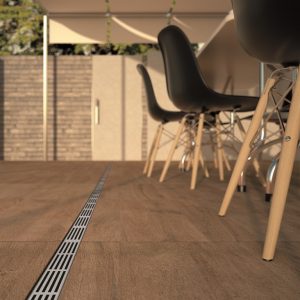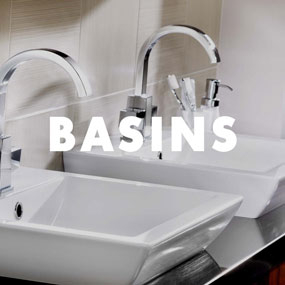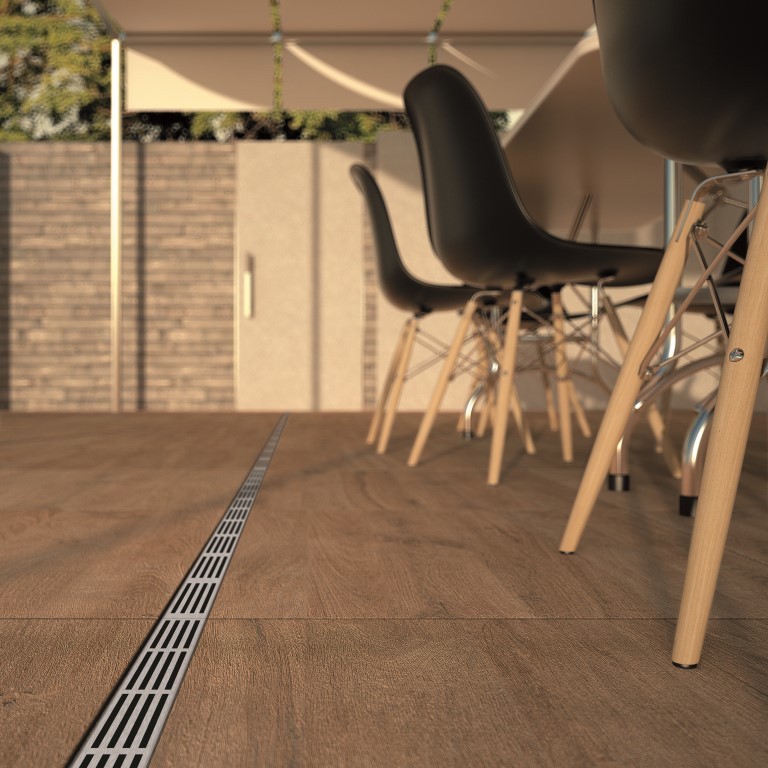Channel drainage systems are used in a variety of applications, from commercial and industrial facilities to residential properties but what do they do and where do we use them? Simply, channel drains are a highly effective drainage solution that prevents standing water.
What are ACO Channel Drains?
First and foremost, ACO is the brand name for the marketing leading manufacturer of channel drains, also known as linear drains. Many people use ACO to describe all drains of this type. The drain has been designed to effectively manage the flow of water. Typically, the systems consist of a channel or trench with a grate or cover, which helps manage surface water that falls on non-porous surfaces and directs to an appropriate main drainage site.
Where should they be used?
Usually found in high traffic, level areas, such as driveways, garage thresholds, pathways, patios... anywhere where rainwater cannot be absorbed naturally into the ground. A channel drain irradicates pools of water to prevent damage.
The SUDS legislation (Sustainable Urban Drainage Systems) and Front Garden Rules were introduced in 2008 to counteract urban flooding caused by the increase of tarmacking in urban areas.
The increased need for off-street parking has led to paving or tarmacking front gardens, leading to an increase in impermeable paved areas. Rainwater is channelled into the overwhelmed storm drain system rather than naturally draining into the ground and causing flooding.
Following government guidelines installation of any driveway with an impermeable surface that does not naturally drain into adjoining flower beds or lawn areas must have a self-contained drainage system. Water cannot drain into the road. The system must drain into a soakaway. Regulations only apply to the rear of your property (such as a patio) if the property is on a corner. Then they apply to the side facing the road or path.
Which drain is for you?
HexDrain
MicroGrip grating surface finish, typically used for domestic applications, UKCA, CE marked and fully certified to Load Class A 15 BS EN 1433:2002. The 1m channel is great for gardens, patios, and driveways. Easy clip together ACO grating - galvanised steel for a more contemporary feel or a simpler look with black plastic.
ACO have a range of accessories available for each drain to make installation quick and easy!
ACO HexDrain Accessory bag
ACO HexDrain corner unit
ACO HexDrain outlet end cap
ACO HexDrain Sump unit
Brickslot

Manufactured from 100% recycled polypropylene, works with domestic block paving installation and threshold drainage. Suitable for pedestrian and vehicle traffic up to Load Class A 15. UKCA and CE Marked and fully certified to Load Class A 15 BS EN 1433:2002.
Accessories available to aid installation.
ACO Brickslot corner unit
ACO Brickslot sump unit

Threshold
UKCA, CE marked, drain channel fully certified to load Class A 15. Ideal for use with level door thresholds, block paving, patios and paths. UKCA and CE marked and fully certified to Load Class A 15 BS EN 1433:2002. Available with black or silver grating.
Accessories available to aid installation.
ACO drain connector
ACO drain bottom outlet
ACO end cap
ACO corner unit

Raindrain
Lightweight for easy handling. The channel shape anchors the product into concrete surroundings. Manufactured from Vienite, ACO's high-strength polymer concrete material. Suitable for domestic applications up to Load Class A 15.
Accessories available to aid installation.
ACO RainDrain corner unit
ACO RainDrain Sumpbody and grating
Concrete or Plastic?
The channel body can be manufactured from Polymer Concrete, Plastic, or Steel but the two most popular types used around domestic properties are Polymer concrete and plastic drainage channels.
Plastic channel drain
Lightweight made from polypropylene, ideal for domestic applications. The plastic channel drain is durable and easy to install. Lightweight but doesn't compromise on strength, chemical resistant and on the lower end of the price scale, great for keeping costs down.
Polymer Concrete channel drain
Overall, a polymer concrete channel drain is higher in strength and therefore, designed to cope with heavier loads. Mostly used in heavy foot traffic and light road traffic – or in a more industrial setting.
Load Weights
An important point to consider is the load weight. The ‘weight load class’ identifies the level of weight the channel drain can bear, and it must be suitable for the application. Most residential options are class B rated for speeds under 20 miles per hour. A lightweight load is typically from low pedestrian-only weight level for gardens all the way up to 90-tonnes for runways, docks, and heavy machinery.
Class A15: 1.5 tonnes
Supports up to a maximum of 1.5 tonnes in weight the most used drain. Designed for pedestrian traffic, perfect for installing in home gardens, paths, and smaller patios.
Class B125: 12.5 tonnes
B125 weight load class for domestic driveways, garage thresholds, and larger patios designed to support weights of up to 12.5 tonnes.
Class C250: 25 tonnes
Supports loads of up to 25 tonnes, typically used for small private car parks.
And last but not least … The simplest way to install an ACO Drain
- Choose a level area to install the drain
- Clear bricks/paving surrounding the installation area
- Clear a trench to suite the channel and lay 50mm (min) bed of concrete
- Mark finishing height with fixed line 3mm below final surface
- Fill trench with concrete and level off with clearance for the channel
- For vertical outlets, remove a knockout to install the outlet and leaf guard accessories
- Install end caps on the end of the channels
- Channels are connected by vertically sliding them into place
- Lay on a bed of concrete
- Refill the trench and re-install the surface
- Finish by installing the grating
Shop our range of ACO Channel Drainage online. Or drop into your local branch to speak to one of our experts. If in doubt, please contact a trade professional.













